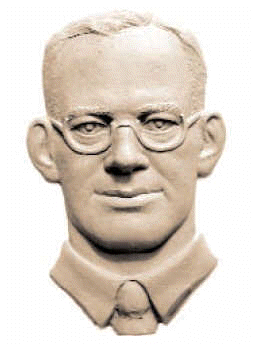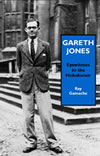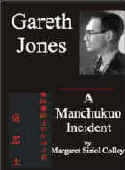Gareth Jones
[bas relief by Oleh Lesiuk]
HOME |
Stop Press |
Complete Soviet Articles & Background Information |
Précis of Gareth's
|
All Published Articles |
BOOKS
|
|
|
|
More Than Grain of Truth(2005) |
|
|
TOPICAL
'Are you Listening NYT?' U.N. Speech - Nov 2009 |
Gareth Recognised at Cambridge - Nov 2009 |
Reporter and the Genocide - Rome, March 2009 |
Order of Freedom Award -Nov 2008 |
Premiere of 'The Living' Documentary Kyiv - Nov 2008 |
Gareth Jones 'Famine' Diaries - Chicago 2008 |
Aberystwyth Memorial Plaque 2006 |
GENERAL
Scholarship Fund |
Site Map |
Links |
Legal Notices |
Sponsored Links |
Contact |
|
On the roof of the temple are dragons with heads looking down and a collection of bells with beautiful sounds hang down. The carvings of dragons are in gold and green. An old man sits at the door of the temple, mutters into his hand and the boys reply. They are dressed in purple and some in dirty yellow cloaks and have hats like Roman soldiers with a yellow mane. The chief priest is very fat, laughing and chuckling all the time, holds a coloured joss stick. The lama priest and children think it is a great joke. The boys look at each arrival and the priests come to see my hairy legs, look in wonder and point. It is 5.30 in the afternoon and the service begins. The festival is in honour of the spirits of the mountain. There are larks in the sky and the swallows swoop about and chirrup. The priests sit cross-legged. The chief on the floor makes a noise, loud like rub-a-dub-dub and seems to wink at us. A big gong bursts into a crescendo of noise. There is more laughter and then a roar from the man on the floor with a big moustache about five inches long. Plessen said: “It is the most extraordinary divine service I have ever attended”. Then the fat chief suddenly draws a heavy stick and right in the middle of the service strikes a boy on the back and on the head in punishment. “What’s that for?” asks Plessen thinking it was part of the ceremony. The Prince had 50 guests. There were Chinese officials, the British Military Attaché, Sir Charles Bell, the High Commissioner for Tibet and daughter, an American artist, some people from Peking Embassies, but mostly Mongol princes and lamas. Sunday was to be the greatest feast of the year, but there was not a single lavatory in the whole palace! Not even for the Prince. That night there was a great feast at the Palace. There were Chinese dishes: lotus seeds, seaweed, shark’s fin, date and 20 kinds of soup including mutton soup. Fermented mare’s milk, which is horrible, is the number one drink, the champagne of Mongolia. |
Gareth at the Lama service. |
|
|
|




